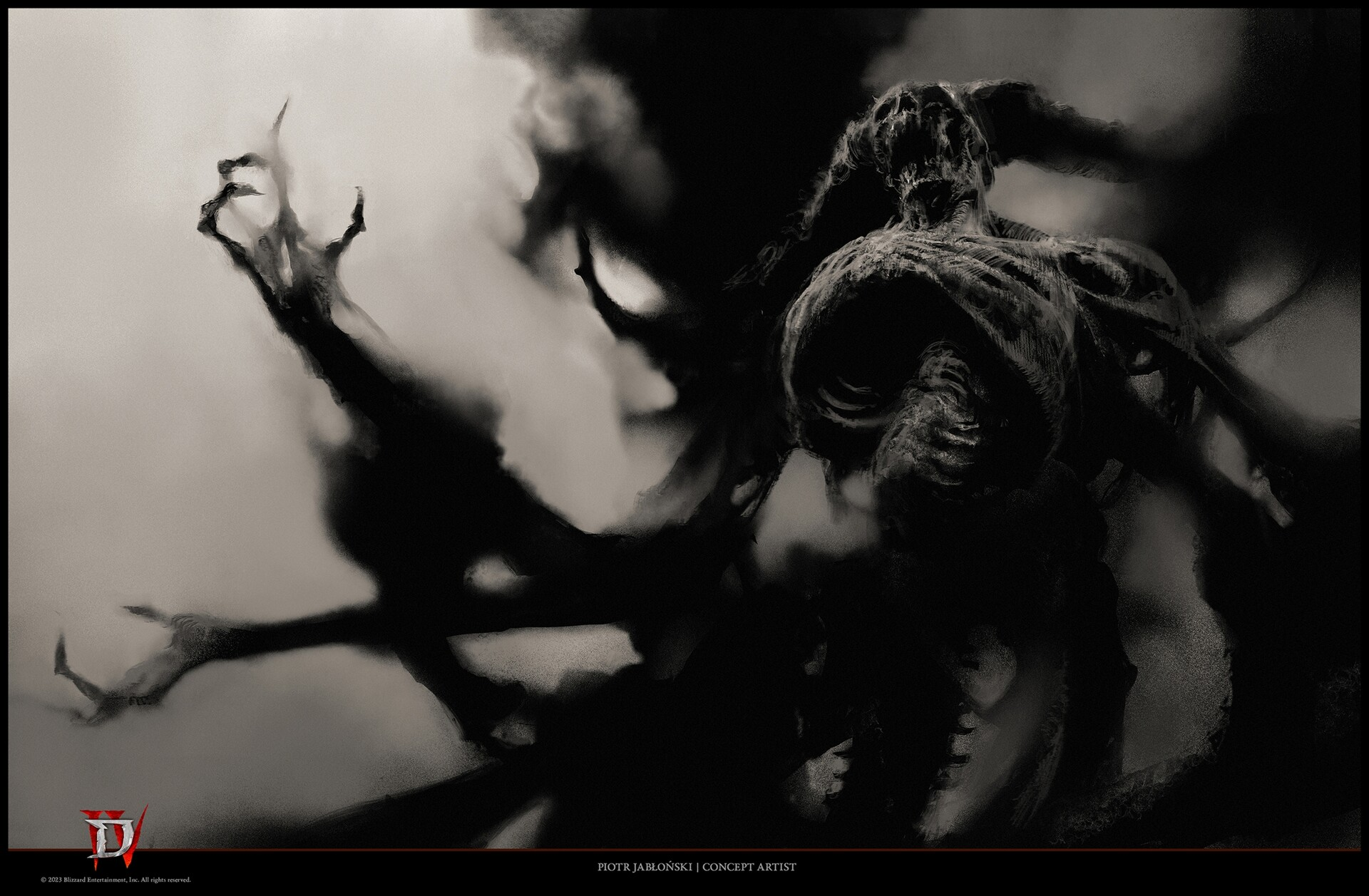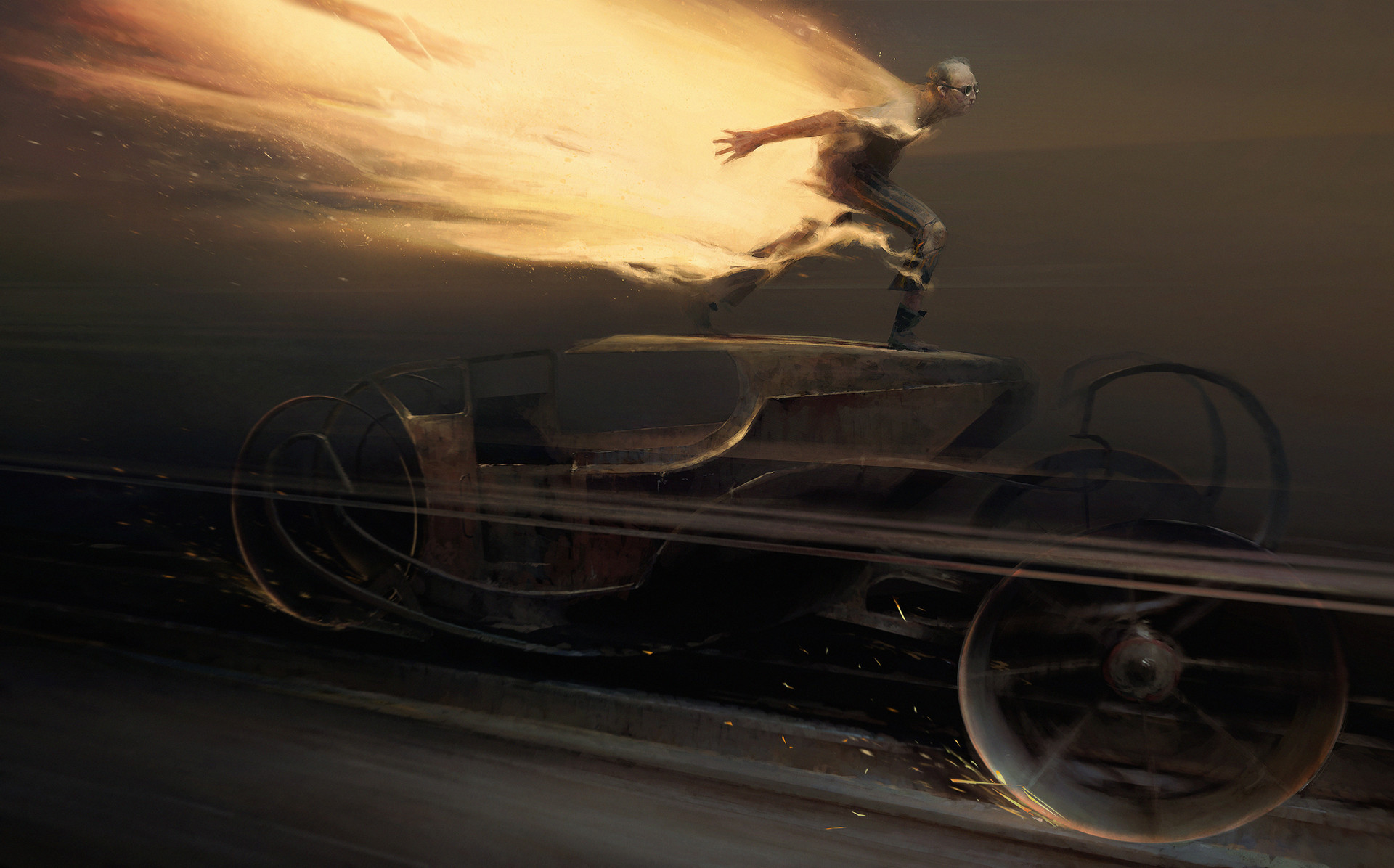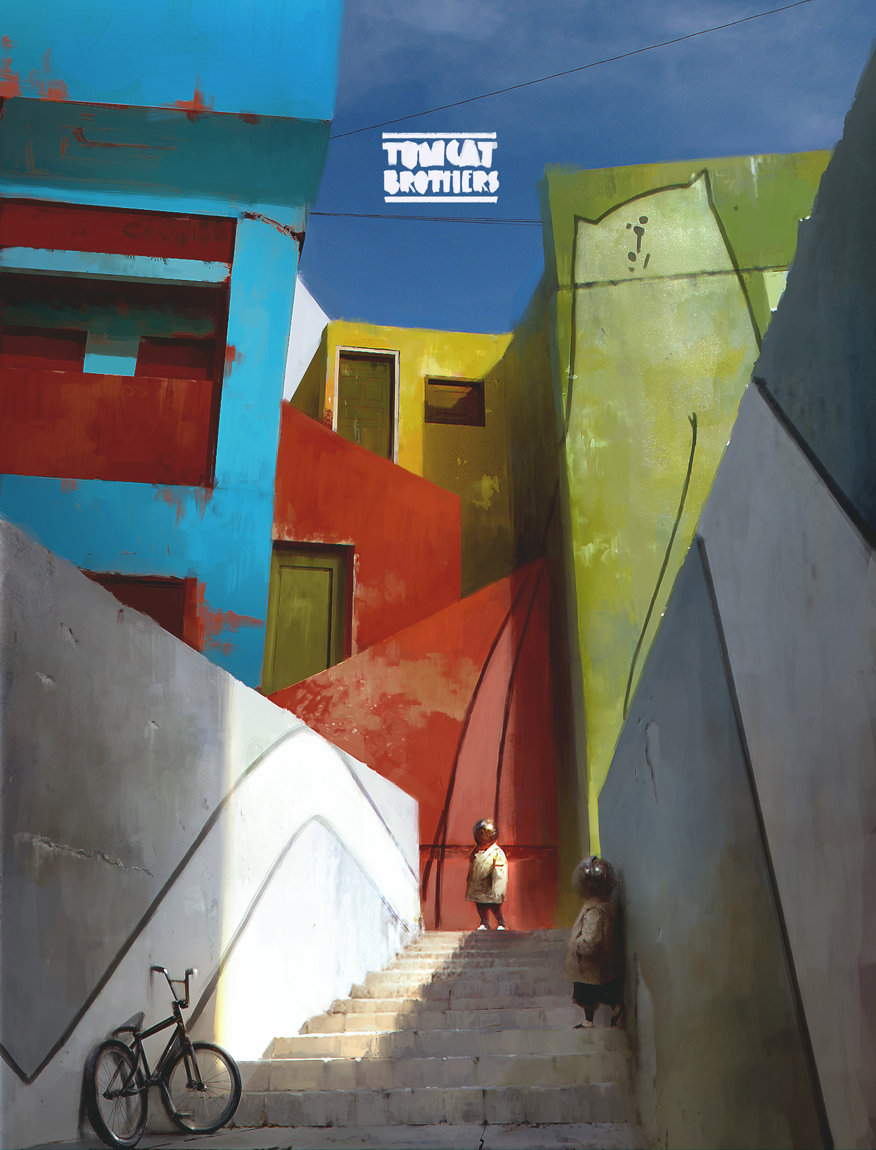Design Sketching Community
Join the conversation around the use of AI in design. 😃
I just posted this on LinkedIn and seem to be hitting a nerve!
Feel free to join the conversation 😃
Exploratory Sketching
Last year I had a lot of fun creating a series of videos for my new ID Sketching course at Technical University Eindhoven. This video is from the second module and introduces my take on 'sketching to explore'.
I am proud to now share this video here with you! And I would love to hear your thoughts on this topic. Feel free to leave a comment below. 😊
Martijn
#inktober2024

Hey design sketchers! Yes, it has been a minute. I have been swamped with teaching three sketching courses at three different institutes. I just added it all up and realised I have been teaching 670 students simultaneously in September!!!
One course is done so I finally have some time to breathe again. Just in time for #inktober 😊.
Although I am running one day behind on the official prompts and noticed that I have also reinterpreted them a bit, I am still enjoying this opportunity to flex my sketching muscles.
You can find my contributions here on Instagram.
Are you taking part to? Please post links to your work below in the comments so I can have a look!
Happy sketching!
Martijn
PS. I made a small mistake in the 'cubes' sketch. Can you find it?



My effort for day 3! Had some time left over while taking my bus and with a ballpoint pen and a sketchbook anything is possible :)
Those were exactly my issues! longer lines become incredibly hard to keep straight, perhaps a challenging training regime to get those perfect lines...
Game Boy Original 3D model turnaround
This is a refreshed model from the one I made in 2018, I recently updated the textures and created an animated version of it.
I made it to be the welcome page for my personal website.
3D software: Maya
Renderer: Arnold for Maya
@khasrouf taif it Looks great!
Thank you :)
Featured: Hypercar concept by our new member Simon Rapisarda!

It's probably any car designer's dream to get to design a new hypercar with an actual car manufacturer and have a full size prototype built! Have a look at this awesome graduation project by our fresh member @Simon Rapisarda . He was part of the student team that worked on this concept. I would love to see the sketches for this project, so if you are reading this Simon, it would be great if you could share some of the exploratory sketches that you did!
Watch the video below to see the whole project.
What a beautiful project! I saw the car before but I didn't know it was done by students, very inspiring. I like how it appears simple at first glance, but the surfaces are very complex, and the design looks very refreshing. One of those cars you could sit in front of, staring at it for days. Really cool!
Agreed, great harmony between design and engineering, I am always fascinated to see such large scale multidisciplinary automotive projects take shape!
practice makes perfect

During the course "Exploratory Sketching" in my first year I developed my sketching techniques due to the very clear guidance and tips and tricks of @Martijn van de Wiel , from sketching rectangles in perspective to drawing all kinds of difficult shapes from my head. I guess my message is that with a little guidance, enough courage and some practice you can absolutely learn to sketch. To give an example, this is my first sketch of the course and my last sketch, a great improvement if I say so myself:)
Great to hear that Binc, but the credits are all yours!!
You have put in the time and effort to investigate, experiment, absorb and practice and that's why you have improved so fast. Keep it up!
Real time Generative AI | Krea.AI (still free)
Here is an interesting one. I found that combining shapes, prompts, images with a real time output gives the impression of much more control that tools like vizcom where you have to wait for a while to see the result. I wonder what do you think of this? Is it near the end for traditonal photoship photobashing?
Hey Jakub, thanks for sharing this update! It looks quite powerful and the realtime component definitely sets it apart from other ai tools. I can see how this is beneficial if you are crafting an image - when the image is the end product. At the same time I am not sure how helpful this is in the kind of sketching that I do when I am designing products - when the sketch is the vehicle for thought. I often find unexpected clues in the ambiguity of my own sketches. A misinterpreted line can suddenly evolve into a character line. I'm sure the AI ill present me with similar interpretations of my scribbles, but having a permanent 'translator' actively interpreting my sketches could also become very distracting and possibly annoying. I will need to try it out and maybe the experience will prove me wrong.
Did you try that already? Design sketching in Krea?
I poked around a bit but not too much. For more complex geometry it's still not great. I wouldn't use it for rendering... However, It's much better for early exploration than any other tool I used before (other than a white piece of paper) especially if connected to a drawing tablet - rapid concept variation, mood boards and storyboards - that kind of thing.
Adjusting the prompt influence and your drawing influence and having immediate feedback is a big step forward for these tools IMO. Im curious what you come up with when you give it a try! And ill definitely share if I get some interesting results;)
Flicking through sketchbook (BIC only)
Finding a moment to unwind during my graduation stress became crucial. My go-to? Sketching cars in a plain old notebook from Action, using nothing but a BIC pen. These sketches are my late-night companions, a way to clear my head before diving into sleep. Some are from my imagination, such as the retro-futuristic 1970's American cars, and others from what I've seen around, such as the 405, 240Z and Model T. But all of them serve the same purpose – to give my brain a break.
As I flip through the pages, I notice something cool. Each sketch is a bit better than the last. The shading gets smoother, and the proportions are more accurate. It's like seeing my progress right before me, a reminder that practice pays off. Flipping through it, you can see some progress. Also, each sketch was completed quicker than the last one. I'll continue this from time to time and hopefully become more neat with the pen, for it is mightier than the tablet.
They are not perfect sketches, but they are pretty cool 'in my book' ;)
So cool to see this @Philip van Veelen !! Progress is very clear!
I love the model-T sketch on page 5. The strong perspective makes it a bit sportier! ;)
I recently also started doing some car sketches. Something I have always feared! As you mentioned the proportions are so important in cars and it's very easy to mess up...

Very cool! It's between the Pontiac Solaris and the Mazda Cosmo. The T was inspired by seeing one drive by in the wild in person while walking in the forest. Cars are always a challenge, but I also think they are good practice, not just in perspective or proportions but also for giving character to a design. I see you are like I am: more of a fan of older car designs than new ones. Yours reminds me of the 2000s, when, in my opinion, surfacing and graphics peaked. 350z, Pontiac Solaris, Ferrari 550, Audi TT, and the Gallardo are some of the era's best examples.
How do we sketch in the future?

I often raised this question during the last session of my classes to stir up a debate about the values of their brand new skill set and the potential of technology to augment, disrupt or even replace this skill.
Is the ability to sketch still relevant in the context of the AI-wave of text-to-image and image-to-image generation tools that is currently crashing down on us?
Or how about the use of VR with applications like Gravity Sketch where one can truly sketch in 3D?
Looking at all the options we have today, even tools like sketching tablets and Photoshop already start to feel like 'old school' technology.
Why should we still invest in training sketching skills on paper?
I have some thoughts on this topic that I will be sharing soon in a new blog post here, but before I do, I would love to hear your thoughts! Please share them in the comments below.
Thanks!
Martijn
I am excited about VR. I enjoy using it, and it makes it much easier to design with proper sizes and proportions in 3D. Although Gravity Sketch is changing its pricing, I am still super happy with being able to use it. For doodling, reviewing and just playing around, it's amazing to be able to use your whole body, and it's still the only reason to get a VR set for me.
I was initially very excited about AI, but I have become less interested over time. When designing a product, no distinct features, likes, panel gaps, or graphics usually show up; mostly, it is more like visual noise made to look like a high-quality illustration.
During my industrial product design bachelor's, I remember being taught how key lines can align, point towards points of interest, converge, etc., to create a harmonious design. Usually, a simple sketch can give strong ideas, but not understanding these principles leads to design without clear intent, making the design hard to understand and unable to leave a lasting impression.
For being stuck AI might give some ideas, but my experience mostly has been: type a list of words, wait, type, wait, type, wait. I think there are more.. inspiring ways of finding inspiration. To me, it sucks the life and joy out of the process, and I certainly did not choose ID because of the fantastic salary.
For things such as backgrounds, a starting point for going from sketch to rendering in Vizcom, and creating that image you felt was missing in your mood board, I really do find it handy sometimes. It can convey moods, scenes, and characters quite well.
But if I have to read: 'Adapt or die bro' one more time.....
I recall that you were the first to tell me about AI assisted sketching! I don't think I fully understood the examples that you showed me back then and wasn't really impressed yet. That changed rapidly in the months to follow when the AI became more powerful over night and everyone started experimenting with the possibilities including myself.
However, just like with you (and probably many others) the initial excitement has faded for me and I have not done much with it lately. I had the same non-creative experience of typing-waiting-selecting-typing-waiting-adjusting prompts, etc.
Master Concept & Digital Artist | Piotr Jabłoński
Not coincidentally, some of my earliest and most profound sketching inspirations came from behind the scenes of my favourite games. I realized early on that concept artists are silent storytellers. Behind the scenes, they create fantastical landscapes and captivating characters that make new worlds believable and (unbelievably) engaging.
One artist who impacted my sketching journey the most was Piotr Jablonski - a Polish illustrator and concept artist for video games such as Destiny, Dishonored 2 and Diablo IV.



Piotr Jablonski is a master of contrast, light, composition and form. He weaves these elements together like it's nothing to create intricate works with a remarkable sense of depth. Accompanied by unique individuals and distinctive creatures, his pieces take on life and character. His works greatly remind me of master painter Zdzisław Beksiński, with their 'haunting beauty' and exploration of the surreal. On top of that everything he creates seems fresh and varied. Piotr J. sometimes keeps it simple, still and Intense, and sometimes he goes all out intricate and dynamic.





Immersed in his art I picked up my first drawing tablet and started exploring the digital realm. To this day, his ability to balance detail with suggestion is a constant source of inspiration for me. It serves as a reminder that a sketch doesn't need to be fully rendered to be powerful. Sometimes, the most captivating stories are hinted at with a few well-placed lines and a play of light and shadow.






Check out Piotr J's Artstation if it's the first time you hear about him!
Thumbnail Video: TOMCAT Brothers - animation on Vimeo
Thanks for sharing your inspiration @Jakub Woziwodzki !
I love how you use examples from the arts as inspiration for your own sketching style. These are all amazing artworks that we can all learn a lot from in terms of composition, staging, contrast, use of colour and details.
That last video by Piotr is so good I watched it twice :)

Hi Martijn, I think it is a very good video to introduce the 2 different mindsets and iterative development, and I think the students will learn a lot from it.
I could imagine that first-year students might think they are done after the communicative sketches, which equals 1 diamond loop. However, I think it is important to be able to use the explorative mindset again to tackle solutions to problems that the client sees, or what you see the end-user does. Sketching then becomes a powerful tool to problem solving, or communicating your ideas in meetings.
If you would need a comparison to where they also use these mindsets, I am 100 % sure they do so in Architecture, but making a more physical mock up in the final stages of the concept. You could compare this with a physical prototype in Industrial Design.
Well said Naomi and great to hear how you have been using the mindsets in your work! Once you understand the principles they make a lot of sense. Unfortunately most sketching classes I have seen focus more on the communicative values than on the exploratory potential.